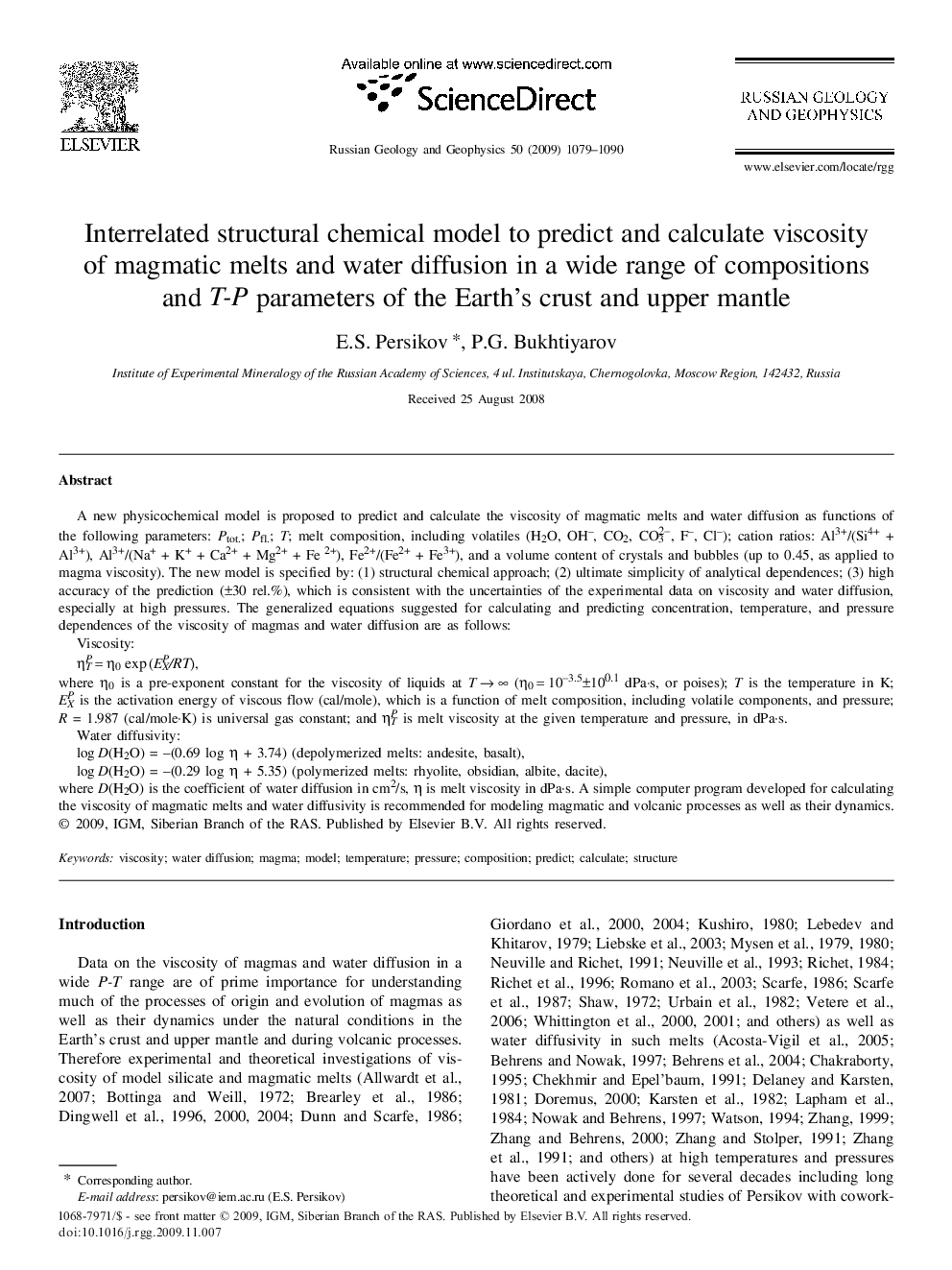| Article ID | Journal | Published Year | Pages | File Type |
|---|---|---|---|---|
| 4739446 | Russian Geology and Geophysics | 2009 | 12 Pages |
A new physicochemical model is proposed to predict and calculate the viscosity of magmatic melts and water diffusion as functions of the following parameters: Ptot.; Pfl.; T; melt composition, including volatiles (H2O, OH−, CO2, CO32−, F−, Cl−); cation ratios: Al3+/(Si4+ + Al3+), Al3+/(Na+ + K+ + Ca2+ + Mg2+ + Fe 2+), Fe2+/(Fe2+ + Fe3+), and a volume content of crystals and bubbles (up to 0.45, as applied to magma viscosity). The new model is specified by: (1) structural chemical approach; (2) ultimate simplicity of analytical dependences; (3) high accuracy of the prediction (±30 rel.%), which is consistent with the uncertainties of the experimental data on viscosity and water diffusion, especially at high pressures. The generalized equations suggested for calculating and predicting concentration, temperature, and pressure dependences of the viscosity of magmas and water diffusion are as follows:Viscosity:ηTP=η0exp(EXP/RT),where η0 is a pre-exponent constant for the viscosity of liquids at T → ∞ (η0 = 10−3.5±100.1 dPa·s, or poises); T is the temperature in K; EXP is the activation energy of viscous flow (cal/mole), which is a function of melt composition, including volatile components, and pressure; R = 1.987 (cal/mole·K) is universal gas constant; and ηTP is melt viscosity at the given temperature and pressure, in dPa·s.Water diffusivity:log D(H2O) = –(0.69 log η + 3.74) (depolymerized melts: andesite, basalt),log D(H2O) = –(0.29 log η + 5.35) (polymerized melts: rhyolite, obsidian, albite, dacite),where D(H2O) is the coefficient of water diffusion in cm2/s, η is melt viscosity in dPa·s. A simple computer program developed for calculating the viscosity of magmatic melts and water diffusivity is recommended for modeling magmatic and volcanic processes as well as their dynamics.
